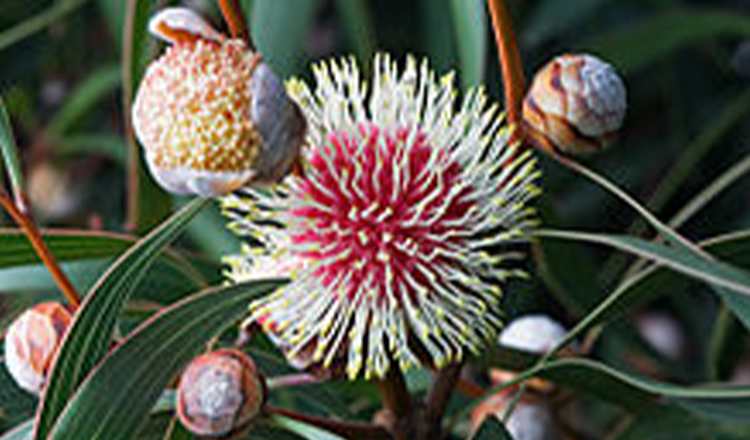Hakea

Hakea is a genus of about 150 species of plants in the Family Proteaceae and are endemic to Australia. They are shrubs or small trees with leaves that are sometimes flat, otherwise circular in cross section in which case they are sometimes divided. The flowers are usually arranged in groups in leaf axils and resemble those of other genera, especially Grevillea. Hakeas have woody fruit which distinguishes them from grevilleas which have non-woody fruit which release the seeds as they mature. Hakeas are found in every state of Australia with the highest species diversity being found in the south west of Western Australia.
Plants in the genus Hakea are shrubs or small trees. Some species have flat leaves, whilst others have leaves which are needle-like, in which case they are sometimes divided and sometimes have a groove on the lower surface. The flowers are arranged in groups in leaf axils and are surrounded by bracts when in bud. The flowers have both male and female parts and are borne on a short stalk called a pedicel. The sepals and petals, jointly called tepals, form a curved tube which sometimes splits open as the flower develops. The style is longer than the tepal tube and is curved before its tip is released. When released, the tip of the style is a pollen-presenter. The fruit of hakeas is woody and persists on the plant until burned in a bushfire or until the plant dies. The fruit then splits open to release two winged seeds.[3][4][5][6]
Hakeas are similar to other plants in the Family Proteaceae, but have undivided leaves arranged alternately, sessile flowers arranged in loose groups in the axils of leaves or bracts, unlike those in the Banksia. Hakeas are similar to species of Grevillea but are distinguished from them in having persistent, woody fruits. (Those of grevilleas are not persistent and not woody. The upper and lower surfaces of the leaves of hakeas are similar (dissimilar in grevilleas), and the ovary and style are glabrous (but hairy in grevilleas).[3][7]
